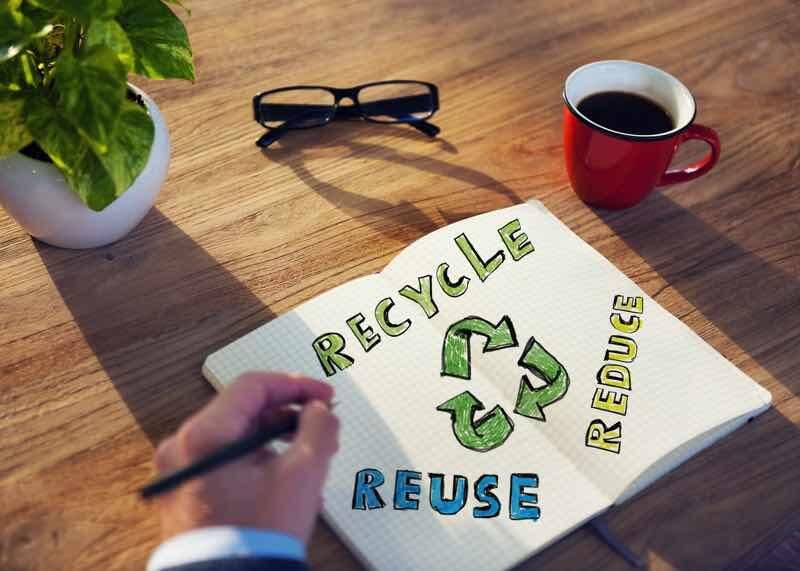In today’s fast-paced business world, the need for sustainable practices is more critical than ever. Businesses are increasingly turning to recycled content in printing to reduce their environmental footprint while maintaining high-quality print outputs. This shift not only supports environmental goals but also aligns with the growing consumer demand for eco-friendly products.
As companies strive to be more environmentally conscious, the use of recycled content in printing has become a pivotal part of their strategy. By integrating recycled materials into their printing processes, businesses can significantly reduce waste and conserve natural resources.

Understanding Recycled Printing Materials
Recycled printing materials are derived from post-consumer waste. This includes paper products that have been used and then processed for reuse. The process involves collecting, sorting, and cleaning these materials before transforming them into new, usable products.
Why Choose Recycled Paper?
Choosing recycled paper is one of the easiest ways businesses can contribute to environmental conservation. Recycled paper uses fewer natural resources and reduces the need for new raw materials.
The Environmental Benefits
Using recycled content in your printing can significantly decrease your carbon footprint. It reduces landfill waste, saves water, and cuts down on energy usage. According to the Formlabs Zero Waste Printing, these practices are essential for a sustainable future.
Challenges in Recycled Printing
While the benefits are clear, there are challenges associated with using recycled materials. These include potential quality variations and higher costs for certain recycled products. Businesses need to weigh these factors when deciding to incorporate recycled content into their printing processes.
Quality Considerations
Not all recycled products offer the same quality. It is crucial for businesses to select the right type of recycled material that meets their quality requirements while still supporting sustainability.
Cost Implications
Although there is an initial investment, the long-term savings and environmental benefits often outweigh the costs. As more businesses adopt these practices, the costs associated with recycled materials are expected to decrease.
Integrating Recycled Content into Your Business
Businesses looking to integrate recycled content into their printing should start by assessing their current print needs and identifying areas where recycled materials can be used effectively.
Steps to Implementation
- Audit current printing practices.
- Research available recycled materials.
- Partner with eco-friendly suppliers.
- Educate staff about the benefits of recycled printing.
For more insights on sustainable practices, visit green paper options.
Case Studies: Success Stories in Recycled Printing
Many businesses have successfully implemented recycled content into their printing processes. These companies have not only reduced their environmental impact but have also seen an improvement in brand reputation and customer loyalty.
Brand Success
One notable example is a company that used recycled content to create eco-friendly branding materials. This approach helped them stand out in a competitive market and attract environmentally conscious consumers. Learn more about this strategy at eco branding.
Future Trends in Recycled Printing
As technology advances, the quality and availability of recycled materials are expected to improve, making them more accessible and affordable for businesses of all sizes.
Technological Innovations
Innovations in recycling technology are paving the way for higher quality recycled materials. This will likely lead to more businesses adopting recycled content in their printing processes.
Market Trends
The market for recycled printing materials is projected to grow significantly in the coming years. Businesses that adopt these practices early will be well-positioned to meet future demand.
The Role of Consumers in Recycled Printing
Consumers play a vital role in the push for more recycled content in printing. As consumer awareness and demand for sustainable products increase, businesses are more likely to adopt these practices.
Educating Consumers
Businesses should educate their customers about the benefits of recycled printing. This can be done through marketing campaigns, product labels, and customer communications.
Conclusion: The Future of Recycled Content in Printing
The future of business printing lies in sustainability. By integrating recycled content into their printing practices, businesses can reduce their environmental impact, meet regulatory requirements, and align with consumer expectations.
To explore how your business can adopt these practices, visit sustainable zine creation.

FAQs
What are the benefits of using recycled content in printing?
Using recycled content reduces waste, conserves resources, and supports environmental sustainability.
Are recycled printing materials more expensive?
While initially more costly, the long-term savings and environmental benefits often justify the investment.
How can businesses start using recycled content in their printing?
Businesses can start by auditing current practices, researching available materials, and partnering with eco-friendly suppliers.
This article contains affiliate links. We may earn a commission at no extra cost to you.







